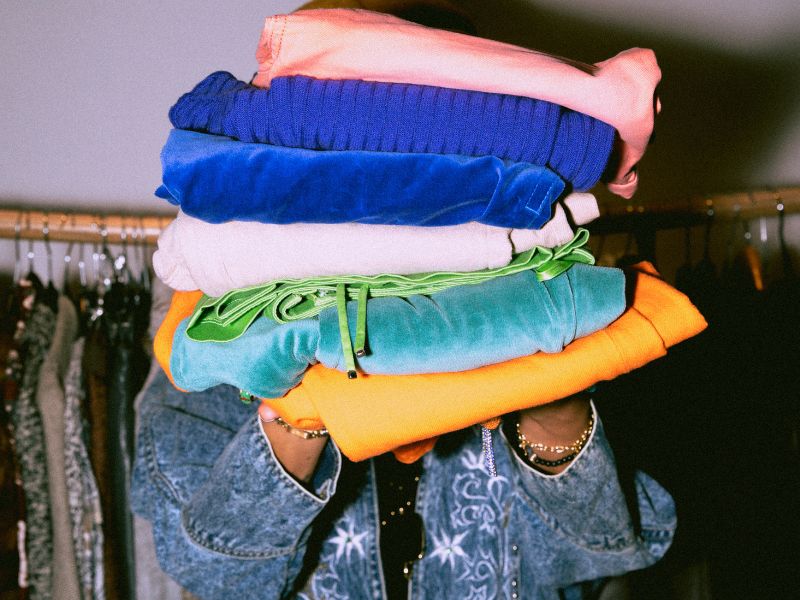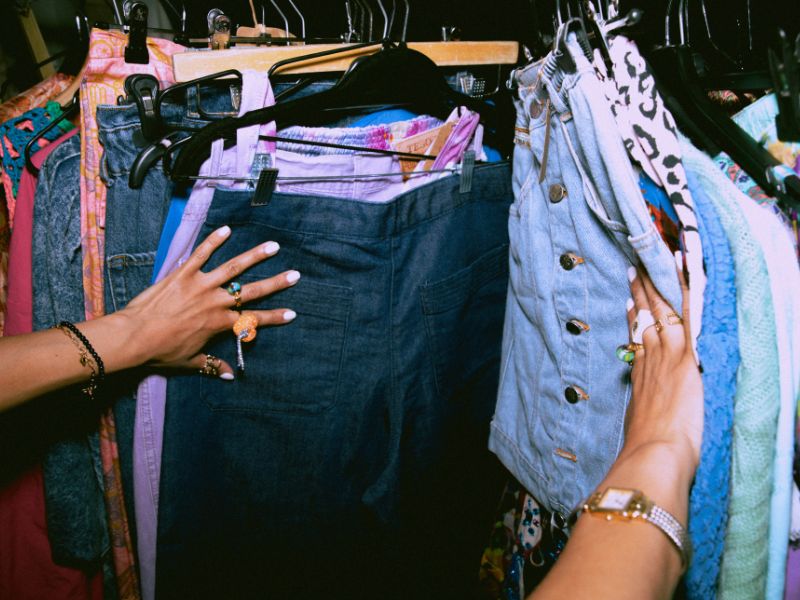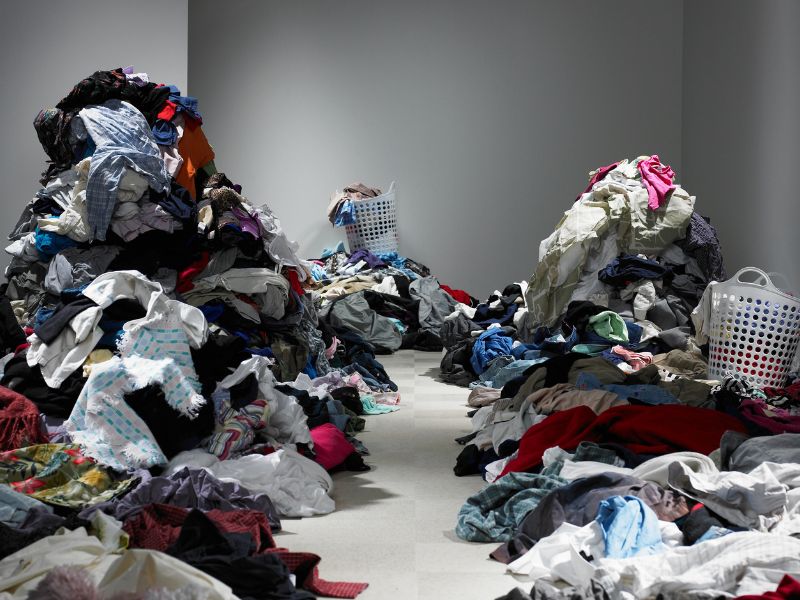
At some point or another, most people will want to declutter their closet and get rid of old clothes that they no longer wear. Whether it is because they no longer fit, have become stained and threadbare, or simply have gone out of style, it’s common for clothing to be discarded as trash. Tossing old apparel in the garbage is the quickest way to abandon old clothes but those fabrics could still have some potential use for you or someone else.
Recycling clothes involves giving them life after their original use. In doing so, you kill two birds with one stone: 1)impeding landfill waste and 2) using fewer resources to make fiber for new clothing. Keeping clothes out of landfills allows them to remain in circulation, being reused and recycled repeatedly so that fewer new fabrics need to be produced. This is sometimes called “circular fashion”, it’s designed to create a closed-loop system in manufacturing so that existing clothes are used for as long as possible.
How to Recycle Clothes
If you want to get rid of your old clothes, you can either pass them on to someone personally, sell/donate them, or give them to a textile recycler who will wash, shred, and separate the fabric into individual fibers. These separated fibers can be spun together to make a “new”, useful product (this process will consume less energy and water than it takes to produce new fibers from raw materials).
If you decide to give clothes to friends or people you know, remember to put your pride aside. The receiver should not feel obligated to keep or wear the clothes that you no longer want. It’s best to offer them whatever you’re willing to give away and to let them choose whether or not they want to take it. It’s probably best not to force your unwanted apparel on anyone, since you can always donate them. Its also not a good idea to give away the clothes that you’re still attached to. If you would be bothered by the receiver not wearing the item, damaging it, or losing it, then perhaps you are not truly ready to part ways with it.

Goodwill Clothes Drop Off
Donating is perhaps the simplest way to ditch your old threads. There are 4,245 Goodwill locations in the United States, with at least one in every state. The Goodwills accept just about everything, handbags, accessories, jewelry, belts, luggage, hats, scarves, gloves, pants, shirts, jackets, etc. Donating here is simple: first, you collect all the clothes that you will be donating and wash them (to make processing the items easier on the staff). Package the items in a bag or box for easy transport. Then, you’ll find a location near you and once you arrive you’ll see signs that direct you to where you will drop off your items. An attendant should be waiting for you at those doors. They’ll take items in any condition, ripped, stained, damaged, and dirty.
For those of you outside the U.S., know that Goodwill is an international not-for-profit organization. They have a network of 183 community-based, agencies in Canada, Mexico, Costa Rica, Venezuela, Trinidad, Brazil, Uruguay, Finland, Italy, Thailand, South Korea, Taiwan, and the Philippines. If you do not have a Goodwill center near you, consider looking up some other donation centers that can find a use for old clothing. Perhaps a local shelter, church, or housing center will accept your undesirables.
Clothes Recycling Bins Near Me
The website Earth911 has a “Recycling Locator” that can help you get directions to all the recycling centers near your area. On their website, you’ll be able to select which material you’d like to get rid of, including clothing, eyeglasses, linens and fabrics (like old rags), and shoes. After your material is selected, you’ll enter your zip code and the site will map several facilities for your drop-offs.

Depop, eBay, Poshmark, and RealReal are online second-hand resellers that will buy used clothes from you. If you choose to recycle this way, you’d be making money back from the clothes that you no longer want. Depending on the condition of the fabric, you can expect to make tens or hundreds of dollars, which may amount to close to what you paid for the item, if not more. If the item is a high-end, designer brand, you can easily make a thousand or more for something in decent condition.
Sites like eBay will require you to list the item for bid on their digital marketplace using your own account. Sites such as RealReal will buy your clothes directly from you; you’ll receive an upfront payment that will take two weeks to deposit into your site account. Either way, you’ll need to print a shipping label to send your item out for sale.
Why We Do Recycle
When clothes are discarded as waste they tend to end up in landfills. Natural fibers can take years to decompose in landfills and release methane greenhouse gases as they do so. It will take synthetic fibers such as spandex and nylon decades to decompose, whereas materials like polyester may take hundreds of years. Landfill fabrics also discharge toxic chemicals and dyes into the groundwater and soils. Data presented by the Environmental Protection Agency states that an estimated 17 million tons of fabric waste was generated in 2018 alone. This made up 5.8 percent of all municipal solid waste generation that year. As much as 1.2 billion tonnes of carbon dioxide equivalent (CO2e) may be generated from textile production per year, making the fashion supply chain responsible for roughly 10 percent of annual global carbon emissions and perhaps the world’s third largest polluter (food and construction and first and second respectively). So throwing clothes away should be your last resort.
By recycling textiles, you’ll be preventing them from becoming landfill pollution and keeping them in rotation for other people. Best of all, this will decrease the demand for new fabrics to be made from scratch.

Try upcycling first! Upcycling just means repurposing items that you already own. In other words, keep your old clothes and recycle them for yourself. Say, for example, taking tattered tee-shirts and making them into rags for cleaning, or cutting up pairs of denim jeans to resew them into unique tote bags. I once used old socks to make an under-door draft stopper, which keeps the cold out during these Chicago winters. If you have any cool ideas on some other upcycling DIYs, please share them as a comment below!
Leave a Reply